
Ginkaku-ji Zen Temple located at the foothills on east side of Kyoto was officially named as Jisho-ji. It was originally built to serve as a retirement living villa for the 6th Shogun Ashikaga Yoshimasa (1435-1490) who was inspired by The Golden Pavilion commissioned by his grand father few decades earlier at the other side of Kyoto. Ginkaku-ji was established in year 1482 and Yoshimasa lived here for 8 years until he passed away in 1490, and as his wish, the buildings were converted into a Zen Temple. The site began to address as Silver Pavilion in Edo period as it was said that Yoshimasa had the intention to have the building fully coated in silver foil when he first built it, but due to the severity of Onin War, the job was halted. Another saying was that it had a silvery appearance when moon light shone on its black lacquered structure.


Though many of the structures that once standing at the site of Ginkaku-ji were no more there, the site was still considered as a good example of Japanese refinement and restraint. Its main Kannon Hall building, Shogun's living quarter Togudo and its 15th century designed landscape gardens, are one of the most outstanding architecture from Muromachi era (1338-1573)


The Temple ground of Ginkaku that covers a land area of 25,000 sq. meters, is now a world heritage site. It represents the unique style of Higashiyama culture of that time.


The two storey main shrine hall and the living hall of Togudo are the only two buildings survived intact since the construction in year 1482. The simple wooden structure of Kannon-den was designed with the combination of some Chinese elements and the architecture style developed in Muromachi era (1338-1573). The upper floor of Hondo Main Hall enshrines a golden image of Kannon (Goddess of Mercy) and a figure of Zizo, the guardian god of children. It is not opened for public.


The East Seeking Hall Togudo is one of the two original structures that remains at site. The front room that houses a priest portrait of Shogun himself, was believed to be the living area of Ashikaga Yoshimasa. The study room at back with 4.5 tatami mats is the oldest extant example of Shoin architecture style and it had become a prototype for many traditional Tatami rooms and tea pavilions that designed today.


The roofing of Ginkaku Temple were made from Japanese Cypress as shows by its miniature model. Each wooden shingle is about 30cm long with 3cm exposed to the weather at the bottom end. They were fixed with a bamboo nail. The existing building of Silver Pavilion had undergone some periodical renovation. The current roofing were redone and earthquake resistance was undated and improved recently in year 2010



Ginkaku-ji is associated with Shokoku school of Rinzai Zen Buddhism. The Temple ground has two famous extensive gardens that laid out by artist architect Soami (1465-1523). Both rock and sand garden were inspired with a zen culture of 15th century.


The impressive dry garden named as Sea of Silver Sand, is just in front of the Main Shrine Hall. It composes of two large sand mounds known as Ginshadan and Kogetsudai. The cone shape sand gravel is said to symbolize Mt Fuji sparkling in the moonlight and the sand raked waves are referring to view from moonlight. It is indeed an incredible piece of art work. We "sadhu" to those who upkeep and maintain the work in such impressive condition.
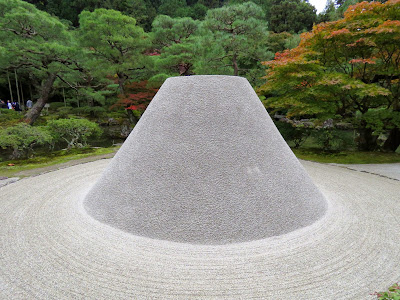

The setting of garden reflects and greatly expressed a sense of Japanese art with Zen sensibility






The second garden features composition of rocks and plants with ponds. Scenery changes while strolling along the pathway.


It is a spectacular sight!

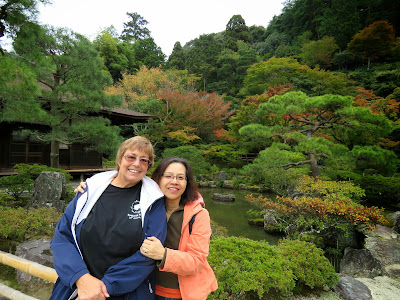


Ponds were built supposedly for visitors to enjoy and admire the beauty of full moon in autumn.


Watch the beautiful Pavilion while strolling around the Kyoto-chi pond.


A picturesque scene of The Pavilion and its Kyoko-chi pond.



Kyoko-chi pond!


An ancient rock in the pond



Crowds enjoy the foliage that just began to change color.


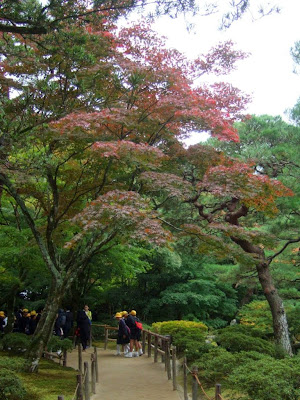
The 500 years old tree

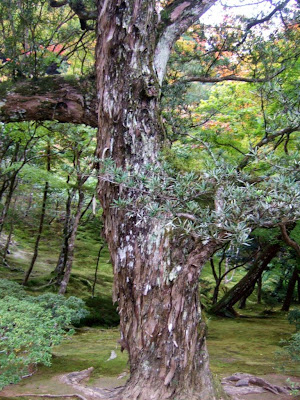

The garden with trace of mid-1600s concept



Moon-Bathing spring pond where people like to throw coins onto its rock and make wishes.

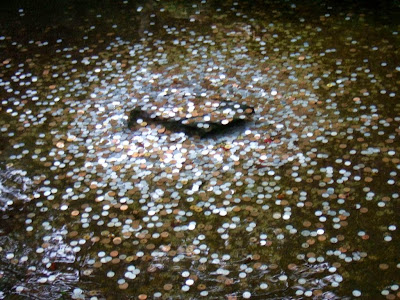

The most beautiful little fall in town!


The wooded ground covers with variety kinds of mosses.



The growing green moss appears just like a huge sheet of carpet covering on the earth.




Chinese old saying, climb higher to look further, here we are, holding our breath and slowly ascending up the hill to have further exploration and distance view.





Fall foliage just began, but breath taking!










Distance view of Ginkaku Temple nesting in a thick wood appears imposing!






A distance view from top elevation.


Wendy is a retired teacher from Boston and I met her in a public bus. We had a great time together strolling along the northern part of Higashiyama District.



No comments:
Post a Comment